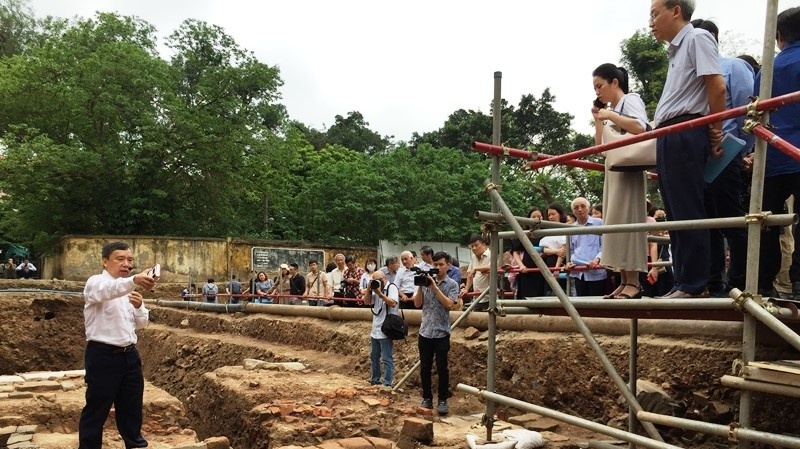Continuing to fulfil the commitments of the Government of Vietnam with UNESCO on the conservation and promotion of the value of the Thang Long Imperial Citadel, the Thang Long – Hanoi Heritage Conservation Centre has coordinated with the Vietnam Institute of Archaeology to conduct excavation and exploration Kinh Thien Palace area covering a total area of nearly 1,000 square metres.
The excavation results continued to clarify the cultural layer, monuments and archaeological relics dating from the 7th-9th century to the 19th -20th century.
For preliminary evaluation of the exploration results at the Kinh Thien Palace area in 2021, scientists said that the highlight of the cultural layer discovered at this excavation are the artifacts of the Tran Dynasty and Le Dynasty and the Le Trung Hung (Restored Le) Era.
For the first time at Thang Long Imperial Citadel, scientists found a very unique architectural vestige of the Tran Dynasty. It is a circular architectural vestige with a diameter of more than five metres, surrounded by traces of underground culverts and a dense cultural layer of bricks and fire traces and marine mollusc shells. Next to that is a beautifully decorated terracotta pot, up to 1.2 metre in diameter.
Initially, the scientists evaluated that it could be a miniature decoration, or an architectural vestige related to spirituality. Typical of the Le Dynasty artifacts is the architectural model piece with green glaze of the Le Dynasty.
According to scientists and experts, architectural vestiges and relic systems discovered in the excavation in 2021 continue to reflect the complex evolution of Thang Long – Hanoi historical and cultural relics.
Thereby, it has contributed more documents to help clarify the great, rich and diverse values with three globally prominent criteria of the Thang Long Imperial Citadel – a world cultural heritage site. At the same time, it also contributed some valuable materials to serve the research on restoring the main space of Kinh Thien Palace in the Le Dynasty.




